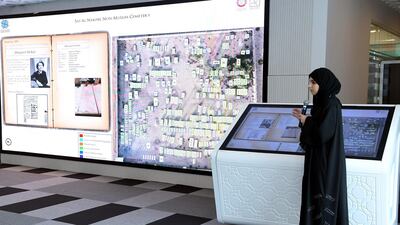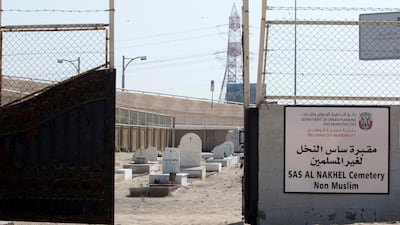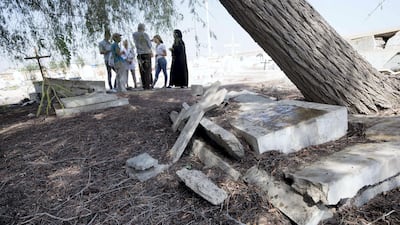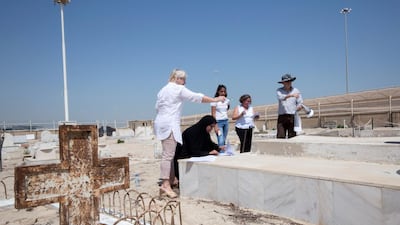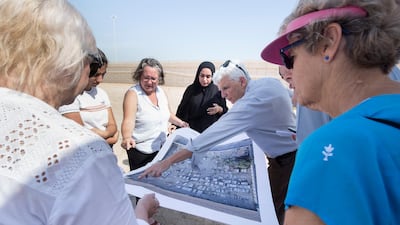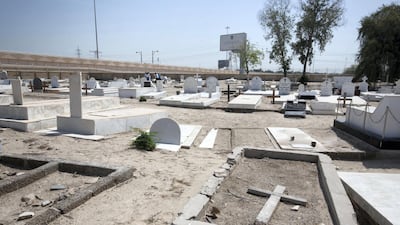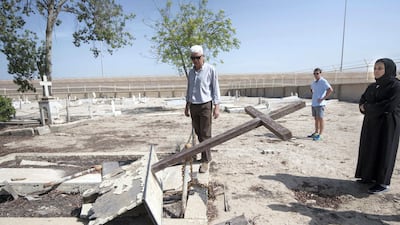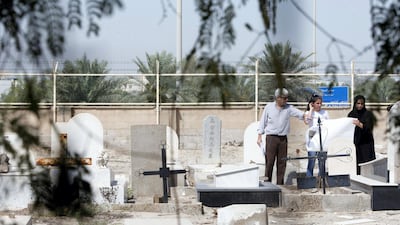The contributions of some of Abu Dhabi's earliest foreign residents to the rise of the emirate have been recognised – decades after their deaths.
The now-closed Sas Al Nakhl cemetery is the final resting place for scores of non-Emiratis, from high-ranking military commanders and Chinese and Indian labourers to those who, sadly, lived less than a year.
There are no road signs to indicate the non-Muslim cemetery's existence, but that did not stop a team from Khalifa University from seeking to share their stories.
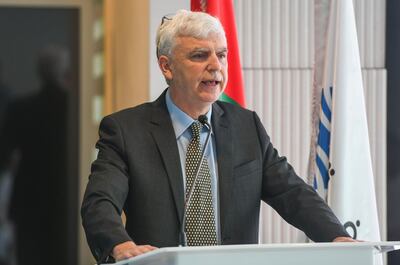
Led by Athol Yates, an assistant professor, volunteers including Emirati students ensured a lasting legacy for hundreds by creating a digital map where people can click on a grave and view details about that person.
"We want to expand the data we have on the people who are buried there so that we have a full understanding – from the lowest-skilled labourer all the way up to a senior manager – and how all of these people and their experiences have contributed to this country," Mr Yates said.
“Now that tells you an interesting story, because most histories focus on the elites of society. We want to show the much broader spectrum.”

Teams visited churches to study death certificates, burial records and pastoral books and contacted family members. They then numbered each grave, took photographs and began building a picture, where possible, of each grave.
The result of months of work is a large interactive touchscreen display that is expected to be housed in Al Maqtaa Police Museum, when it opens. The screen provides visitors with information about 450 people buried at the cemetery, which was in use from the 1960s until 2012.
It is believed that Sheikh Shakhbut, Ruler of Abu Dhabi at the time, granted land for the site in the 1960s. It was managed by the Anglican church and other churches paid a fee to bury people there. Buddhists, Hindus and Christians are buried side by side.
The cemetery was replaced by a new facility in Bani Yas.
Today, some still come to pay their respects but the site lies mostly undisturbed in the shadow of motorways and buildings.
The research team found that the most represented religion was Roman Catholic, with the most common nationality being Indian. The vast majority of those buried there were stillborn or died within a year.
Mr Yates was inspired to carry out the project after his search for information on the death of a former commander of the Abu Dhabi Defence Force yielded limited information.
He soon came to realise only meagre details were available about many non-Muslims who had died in the country in years gone by.
The hard work Dr Yates and his volunteers put in has ensured future generations can now explore the past and continue to pay tribute to those who came before.
